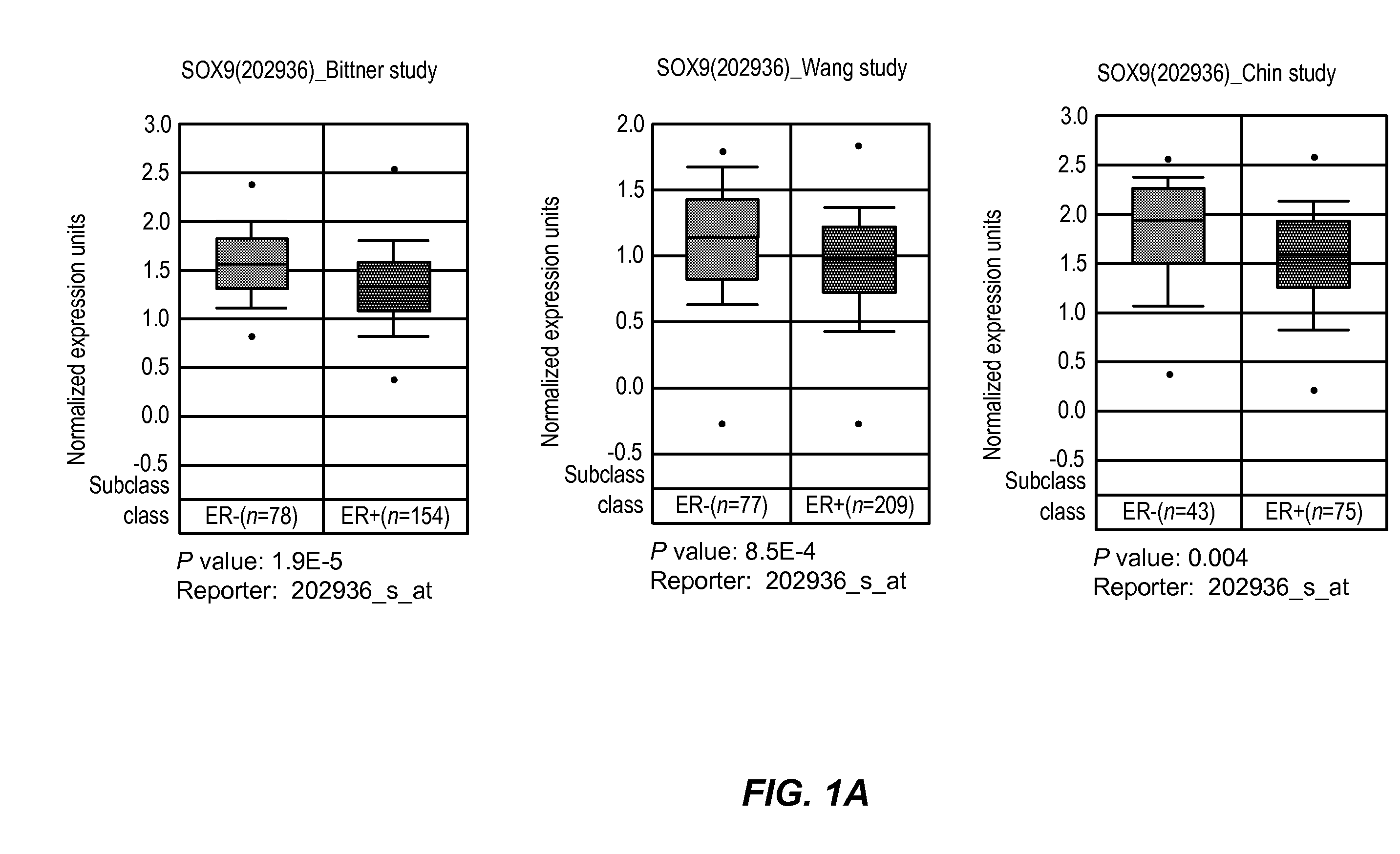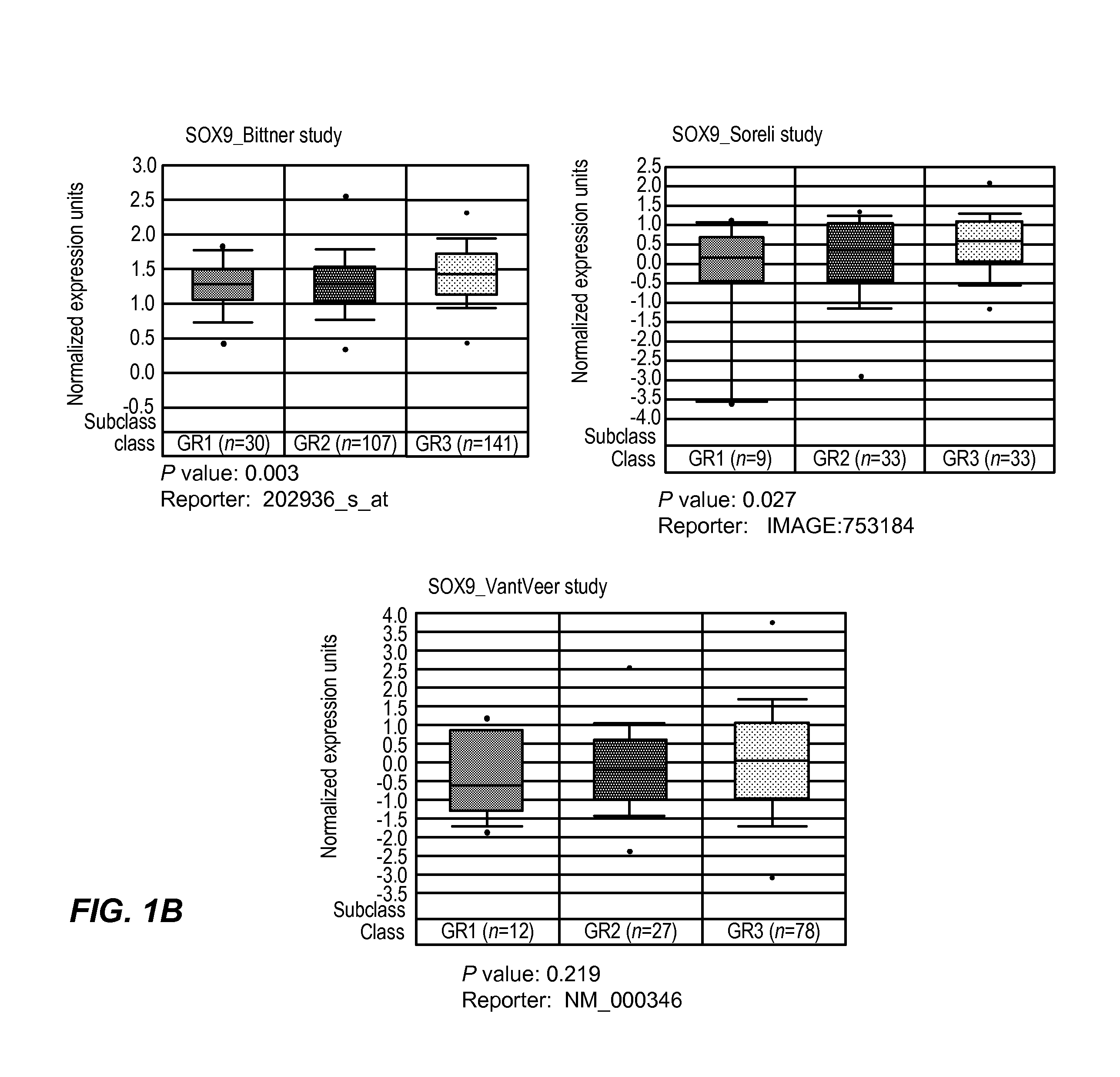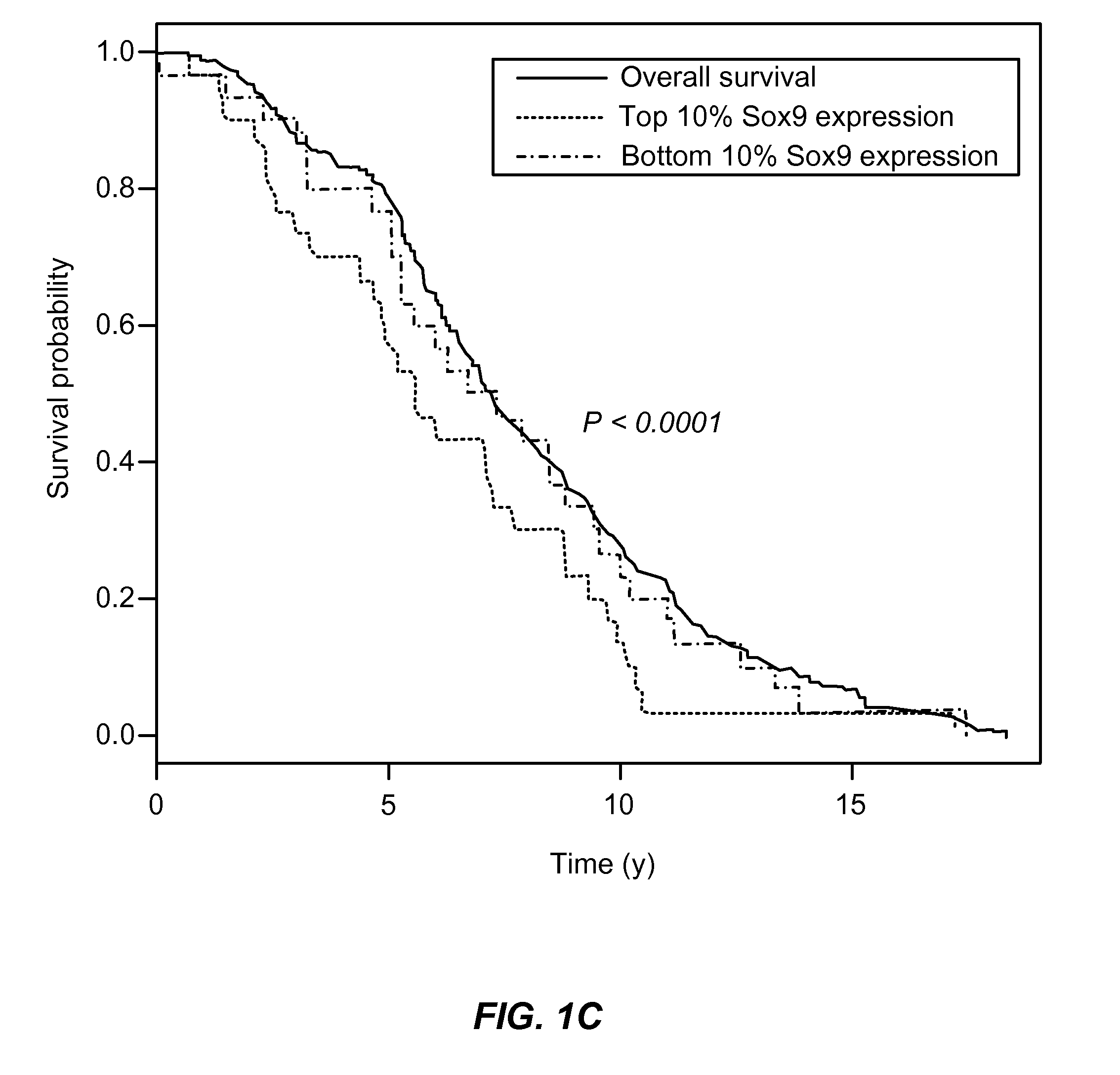Sox9 as a marker for aggressive cancer
a cancer and marker technology, applied in the field ofsox9 as a marker for aggressive cancer, can solve the problems of lack of specific diagnostic tests, poor prognosis of idcs of all human breast tumor types, lack of profiling studies, etc., and achieve the effects of lower aggressiveness, and higher or lower aggressiveness
- Summary
- Abstract
- Description
- Claims
- Application Information
AI Technical Summary
Benefits of technology
Problems solved by technology
Method used
Image
Examples
example 1
[0041]This Example sets forth the materials and methods used in the studies reported in Examples 2 and 3, below.
[0042]Differential expression of SOX9 with respect to estrogen receptor status and grade was computed from datasets available from Oncomine 4.4 Research Edition (Compendia Bioscience, Inc., Ann Arbor, Mich.). Oncomine's gene search function was used to locate microarray studies for which gene expression data were publicly available. Studies were further queried to determine if they also enlisted information on prognostic indicators of breast cancer such as histological grade and ER status in addition to the expression unit data for SOX9 in breast cancer. Data obtained for individual studies was processed and normalized by Oncomine and used directly for differential expression analysis of SOX9. Results were sorted based on each class of analysis and used to create boxplots. Meta analysis of these studies was not performed as some of these studies used different array platfo...
example 2
[0054]This Example reports the results of a first group of studies conducted in the course of the present invention.
[0055]SOX9 Expression is Significantly Associated with Estrogen Receptor Negative and Higher Grade Human Breast Tumors:
[0056]To investigate whether SOX9 was over expressed in human breast tumors and to determine its relationship with ER status, tumor specific SOX9 mRNA expression data were down loaded from the Oncomine or ITTACA websites and analyzed to look for differential expression of SOX9 with respect to ER status and histological grade. Higher SOX9 expression (as detected with the probe set 202936_s_at) was significantly associated with ER negative phenotype in three separate studies. Specifically, the mean SOX9 expression in ER+tumors in the Wang et al. (Lancet, 365(9460):671-9 (2005), Chin et al. (Cancer Cell, 10(6):529-41 (2006) and Bittner (NCBI's Expression Project for Oncology (“expO”) Gene Expression Omnibus (“GEO”) database, on-line on the NCBI GEO access...
example 3
[0066]This Example discusses the results set forth in Example 2.
[0067]The results set forth above contain three observations that provide a clear rationale for using SOX9 as a biomarker for identifying poor prognostic invasive breast cancers. The first observation is based on gene expression analysis of publicly available breast cancer databases. This analysis revealed that SOX9 expression is significantly associated with the estrogen receptor negative phenotype, higher tumor grade and poor overall survival. The second observation indicates that SOX9 protein is undetectable using IHC in normal breast tissue but is significantly over-expressed in some invasive ductal carcinomas and lymph node metastasis specimens. Third, and finally, unlike ADH, where SOX9 expression is nuclear, DCIS & invasive ductal carcinomas show cytoplasmic expression of SOX9 that significantly correlates with Ki-67 expression in the IDC specimens. These observations indicate a hitherto unknown but important fun...
PUM
| Property | Measurement | Unit |
|---|---|---|
| density | aaaaa | aaaaa |
| pH | aaaaa | aaaaa |
| Mean±SEM | aaaaa | aaaaa |
Abstract
Description
Claims
Application Information
 Login to View More
Login to View More - R&D
- Intellectual Property
- Life Sciences
- Materials
- Tech Scout
- Unparalleled Data Quality
- Higher Quality Content
- 60% Fewer Hallucinations
Browse by: Latest US Patents, China's latest patents, Technical Efficacy Thesaurus, Application Domain, Technology Topic, Popular Technical Reports.
© 2025 PatSnap. All rights reserved.Legal|Privacy policy|Modern Slavery Act Transparency Statement|Sitemap|About US| Contact US: help@patsnap.com



